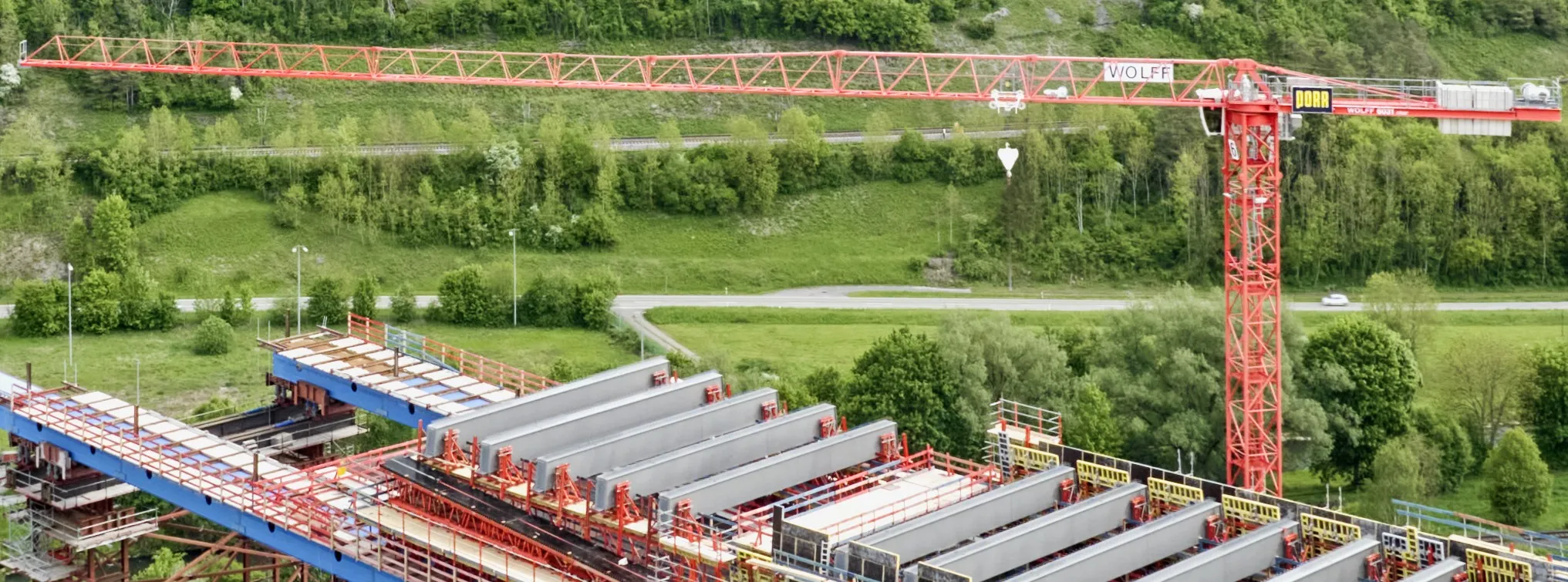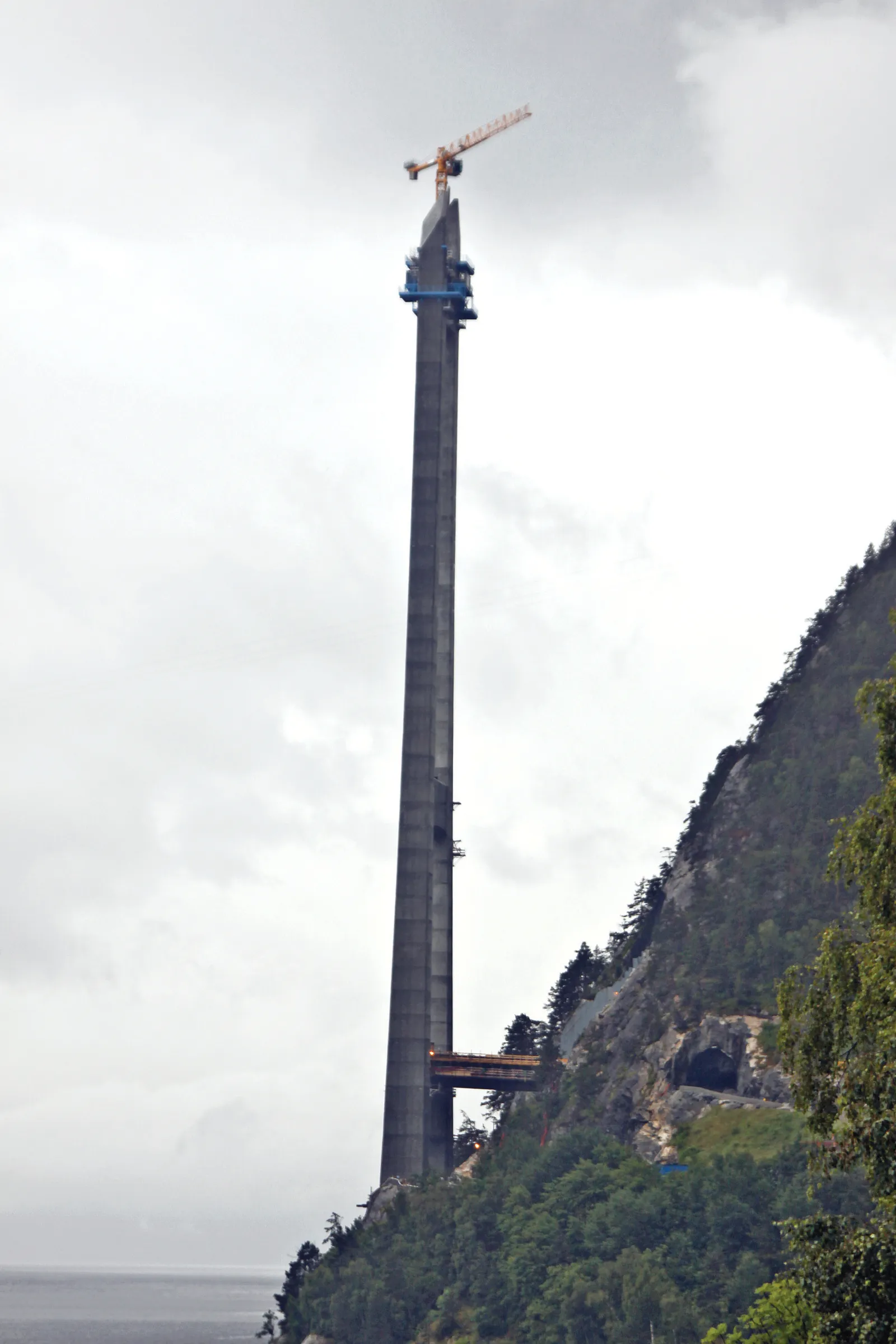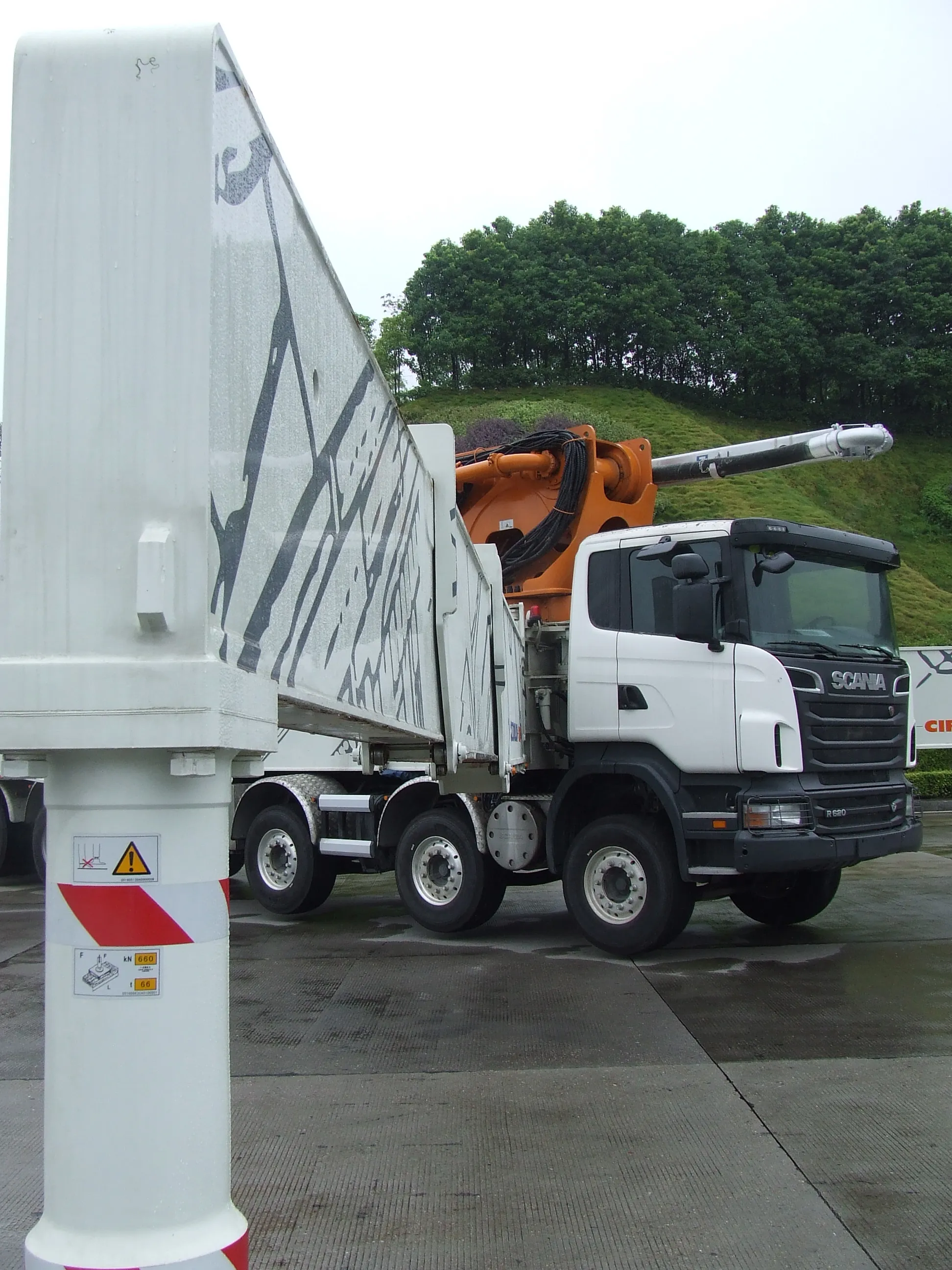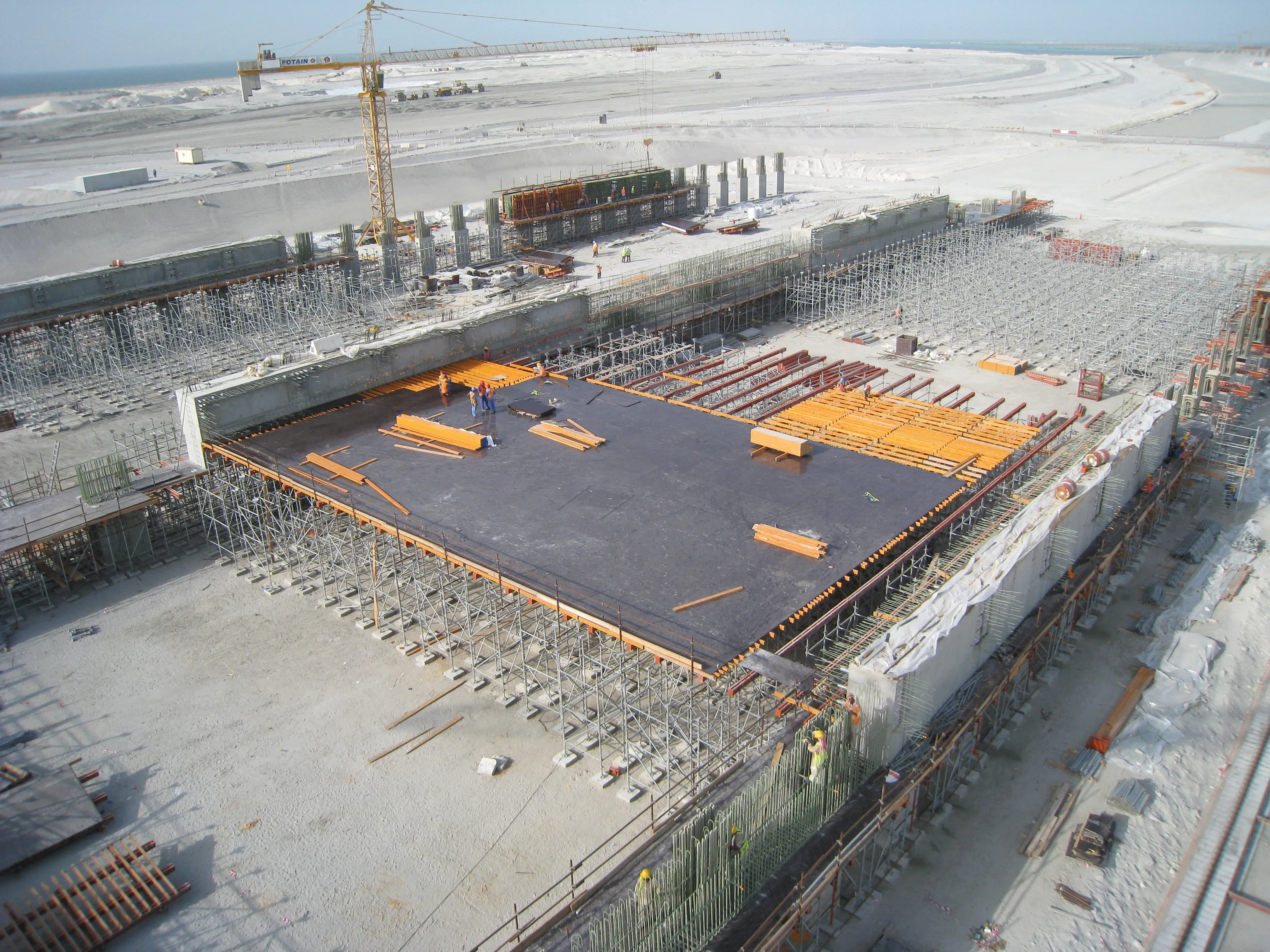
When completed, this impressive 667m-long and up to 90m-high bridge will span the Neckar Valley near the small town of Horb in Baden-Württemberg state, Germany. Thanks to this new bypass, traffic in the centre of Horb will be reduced and the region's transport infrastructure will be upgraded.
But until then, there will be plenty to do for the contractor Porr and five WOLFF cranes that are in use at the enormous construction site. Their figures are also impressive: two freestanding WOLFF cranes are operating on towers 96m and 101m high.
At present, the two WOLFF 7534.16 Clear cranes are drawing a lot of attention in the Neckar Valley. Both are around 100m high and tower over the first 70m elements of the new viaduct. Since the fall of 2023, they have been moving heavy freestanding steel components, formwork, reinforcements and concrete buckets. With their 75m jibs, they can lift a maximum of 16.5 tonnes and 3.4 tonnes at the top (4-strand operation).
“This is normally not possible with a freestanding crane,” explains Wolfgang Kavelius, sales manager at Wolffkran. “But the special design of the bridge piers meant that no tie-ins could be used or they would have been disproportionately complex and expensive.”
The WOLFF technical team
For this reason, Porr turned to the technical support team at Wolffkran, which not only developed a suitable crane concept, but also a special structural solution for the two Porr-owned WOLFF cranes. “To ensure the necessary stability, the towers were assembled using three different tower elements,” explains Peter Hegen-bart, head of sales project engineering at Wolffkran.
The lower third of the towers is formed by the TV 33 tower element with a side length of 3.3m. Above this is a transition area composed of tower sections with a side length of 2.5m, which leads into the upper half of the tower made of 2mx2m tower sections (TV 20). “This specialised structure makes it possible to limit the maximum tower deformation to well under 2m, thus allowing the cranes to be operated safely as freestanding units,” says Hegenbart.
“Thanks to Wolffkran’s experience and technical expertise, we can use our own WOLFF 7534 Clear cranes as planned. This also allowed us to simply rent the additional 3.3m tower elements we needed for the project. We appreciate this flexibility, which goes above and beyond the normal standard, from our long-standing partner Wolffkran,” says Markus Jahn, project manager at Porr.
Two-stage assembly
In the inaccessible terrain of the Neckar Valley, which is also traversed by an intercity express railway line and a cycle path, the available space is very limited. This makes the construction site logistics particularly challenging.
Because it was not possible to use a sufficiently large mobile crane to erect the two WOLFF 7534.16 Clear cranes to their ultimate height, the assembly was carried out in two stages. After the mobile crane had assembled the tower to a height of around 60m, the cranes climbed the remaining 40m to the top using an external climbing mechanism.
For space reasons, both cranes were placed on foundation anchors. As construction progresses, the complex assembly process, which takes two days for each crane, will have to be repeated, as one of the two cranes will be moved to follow the progress of the expanding bridge.
The WOLFF 7534.16 Clear cranes are currently being supported by a WOLFF 6031.12 Clear with a 65m jib and a 47.3m hook height. As the construction process moves forward, a WOLFF 7534.16 Clear and a WOLFF 6031.12 Clear from the Porr crane fleet will support the pack.









